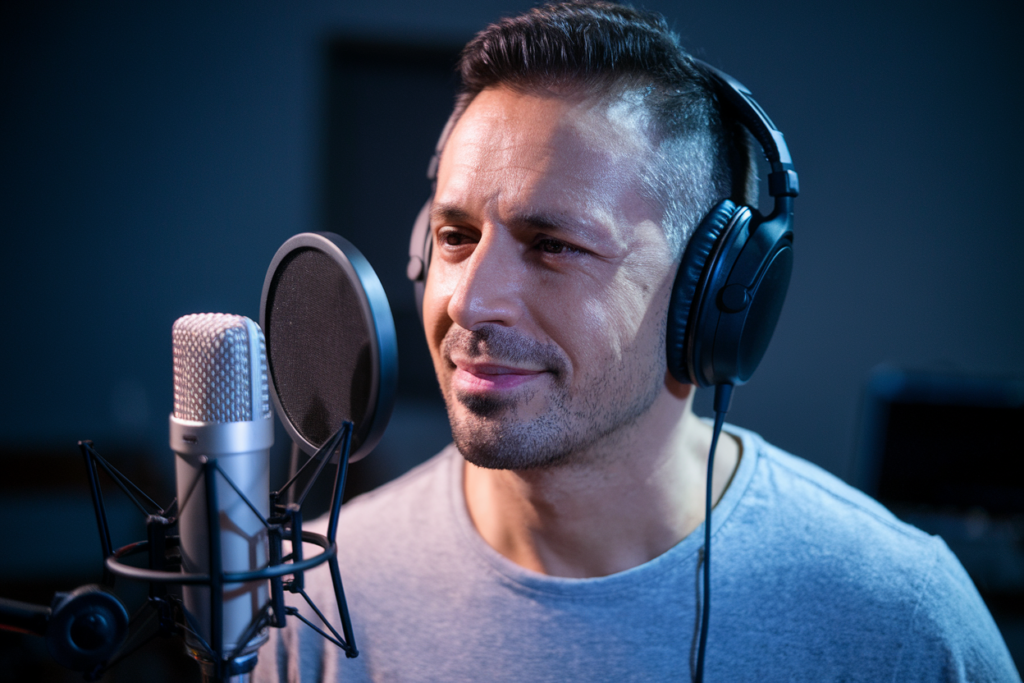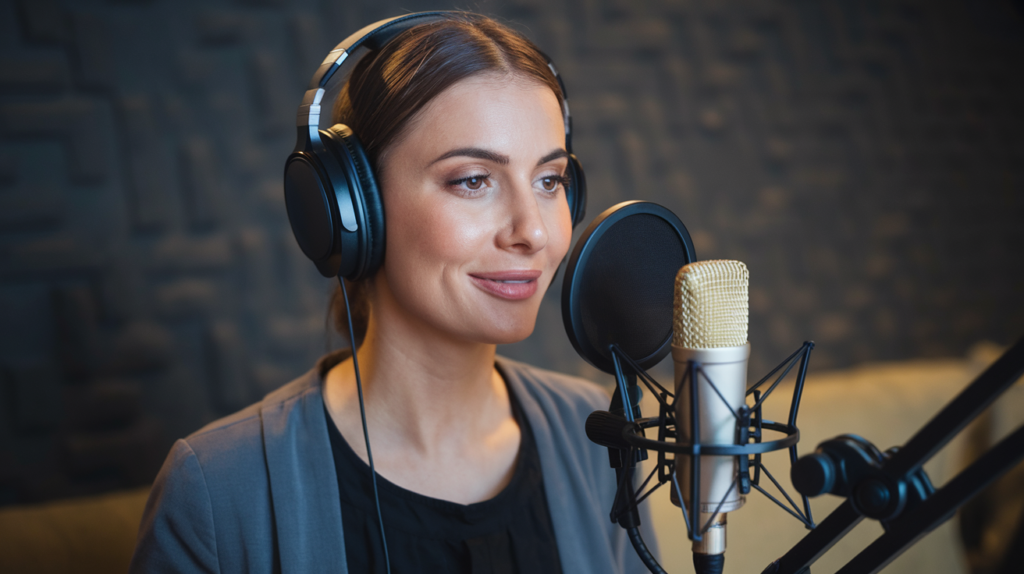Key Takeaways
- Understanding Nuances: Achieving perfect Turkish lip sync requires a deep comprehension of pronunciation, emotion, and cultural context inherent in the language.
- Cultural Familiarity: Engaging with Turkish culture through media helps grasp idioms and expressions, enhancing authenticity in performance.
- Focus on Pronunciation: Mastering unique sounds of Turkish is essential; practice mimicking native speakers to capture emotional nuances effectively.
- Timing and Rhythm: Lip syncing success hinges on aligning speech with visual cues; utilize software tools for better timing analysis.
- Utilize Technology: Leverage audio editing software and mobile apps to refine your skills and record practice sessions conveniently.
- Community Engagement: Joining online forums and groups can provide valuable feedback and support from fellow voice actors navigating similar challenges.
Ever wondered how some people nail that perfect Turkish lip sync while others struggle? If you’ve tried to mimic the rhythm and flow of Turkish dialogue but just can’t seem to get it right, you’re not alone. Achieving perfect Turkish lip sync requires more than just good timing; it’s about understanding nuances in pronunciation and emotion.
Understanding Turkish Lip Sync
Achieving perfect Turkish lip sync requires a deep understanding of both the language and its cultural nuances. You can’t just focus on timing; pronunciation and emotion play vital roles in creating an authentic experience.
Cultural Context
Turkish culture significantly influences its language, making context crucial for effective communication. Familiarizing yourself with cultural references, idioms, and expressions enhances your ability to convey emotions accurately. Recognizing how different regions in Turkey may pronounce words or phrases can also impact your delivery. Engaging with native speakers or consuming Turkish media will deepen your comprehension of these subtleties.
Importance of Lip Syncing
Lip syncing isn’t merely about matching sounds to visuals; it’s about embodying the character’s feelings and intentions. A voice actor must ensure that their performance aligns seamlessly with the dialogue’s rhythm, emphasizing emotional highs and lows. Proper lip sync creates a believable connection between characters and audiences, enhancing viewer engagement. Whether you’re a voice talent working on animation or dubbing films, mastering this skill elevates your work to new levels of professionalism.
Understanding these elements lays the groundwork for achieving flawless Turkish lip sync while capturing the essence of the dialogue authentically.
Techniques for Achieving Perfect Turkish Lip Sync
Achieving perfect Turkish lip sync requires attention to detail and practice. Here are some essential techniques to consider.
Mastering Pronunciation
Focusing on pronunciation is crucial for voice actors aiming for authenticity. Practice the unique sounds of the Turkish language, such as vowel harmony and consonant distinctions. Listen closely to native speakers or use online resources to train your ear. Mimic their intonation and stress patterns; this helps you capture the emotional nuances embedded in the dialogue. Record your attempts and compare them with original audio clips—this feedback loop sharpens your skills over time.
Timing and Rhythm
Timing plays a vital role in lip sync accuracy. Observe how spoken words match visual cues during dialogues; aim for seamless synchronization between speech and mouth movements. Use software tools that allow you to visualize audio waveforms, making it easier to align your voice track with the character’s lips. Practice reading scripts at different paces—some scenes require quick exchanges while others demand slower, more deliberate delivery, depending on emotional weight or dramatic tension.
By honing these techniques, you’ll enhance your ability to create natural-sounding performances that resonate with audiences while accurately reflecting the essence of Turkish dialogue.
Tools and Resources for Practicing
Practicing Turkish lip sync requires the right tools and resources to enhance your performance. Leveraging technology can significantly improve your skills.
Software and Apps
Several software programs and apps cater specifically to voice actors aiming to perfect their lip syncing. Consider using audio editing software like Audacity or Adobe Audition. These tools allow you to visualize sound waves, helping you analyze timing and rhythm in your recordings. For mobile options, apps such as Voice Record Pro let you record practice sessions on-the-go, making it easy to refine pronunciation and intonation at any time.
Additionally, platforms like YouTube offer a wealth of content featuring native Turkish speakers. Watching these videos enables you to pick up nuances in emotion and delivery that are crucial for effective lip sync performances. Try mimicking dialogues from popular Turkish shows or movies; this practice not only improves your synchronization but also deepens your understanding of cultural context.
Online Communities
Engaging with online communities offers invaluable support for voice actors honing their craft. Forums such as Reddit’s r/VoiceActing provide opportunities for feedback from fellow artists who share tips on achieving perfect sync. Joining Facebook groups dedicated to voiceover talent allows you to connect with others facing similar challenges while sharing resources that have worked well for them.
Participating in discussions about specific techniques can help clarify doubts regarding pronunciation or emotional delivery in Turkish dialogue. Don’t hesitate to ask questions—most members are eager to assist newcomers navigating the intricacies of lip syncing.
Utilizing these tools and connecting with other passionate individuals will elevate your skills as a voice artist focused on mastering Turkish lip sync.
Common Challenges and Solutions
Achieving perfect Turkish lip sync comes with unique challenges. Understanding these obstacles—and how to overcome them—can significantly enhance your skills as a voice actor.
Overcoming Language Barriers
Language barriers often pose significant hurdles for voice artists. To tackle this, immerse yourself in the Turkish language. Regularly listen to native speakers through films, podcasts, or music. This practice helps you grasp pronunciation nuances and intonation patterns vital for authentic delivery. Engaging with local dialects enhances your understanding of regional variations, making your performance more relatable. Consider using language learning apps or websites that focus on conversational Turkish, allowing you to pick up essential phrases and expressions relevant to different contexts.
Dealing with Performance Anxiety
Performance anxiety can affect even the most seasoned voice talents. Combat this by practicing relaxation techniques before recording sessions; deep breathing exercises often work wonders in calming nerves. Visualizing success—picture yourself delivering lines flawlessly—can also boost confidence levels. Recording oneself during practice not only familiarizes you with the material but also helps identify areas needing improvement without the pressure of an audience. Remember, every voice artist experiences some level of anxiety; it’s about finding strategies that work best for you while honing your craft over time.
By addressing these common challenges, you’ll improve your ability to achieve perfect Turkish lip sync and enhance overall performance quality as a voice actor.
Conclusion
Achieving perfect Turkish lip sync is a journey that combines technique and cultural understanding. By honing your pronunciation and mastering the emotional nuances of the language, you can create authentic connections in your performances. Utilizing technology and engaging with native speakers will further enhance your skills.
Overcoming challenges like language barriers and performance anxiety is key to improving your craft. With dedication and practice, you’ll not only elevate your voice acting but also bring characters to life in a way that resonates with audiences. Embrace these strategies, and watch as your Turkish lip sync transforms into an impressive art form.
Frequently Asked Questions
What is Turkish lip sync, and why is it challenging?
Turkish lip sync involves matching spoken dialogue to character movements in animation or dubbing. It’s challenging because it requires not only precise timing but also an understanding of pronunciation, emotion, and cultural nuances unique to the Turkish language.
How can I improve my Turkish lip sync skills?
To enhance your Turkish lip sync skills, practice mimicking native speakers’ intonation and stress patterns. Use software tools like Audacity for analyzing rhythm and timing, and record yourself to refine your delivery.
What resources are recommended for practicing Turkish lip sync?
Useful resources include software like Audacity and Adobe Audition for audio analysis, mobile apps like Voice Record Pro for practice on the go, and platforms such as YouTube to observe native speakers’ delivery styles.
How does cultural context impact lip syncing in Turkish?
Understanding cultural context enhances effective communication in Turkish. Familiarity with idioms, regional pronunciations, and emotional expressions helps voice actors deliver performances that resonate authentically with audiences.
What common challenges do voice actors face when doing Turkish lip sync?
Voice actors often encounter language barriers and performance anxiety. Overcoming these challenges involves immersing oneself in the language through films or music and practicing relaxation techniques to build confidence during recordings.
Are there online communities that support voice acting in Turkish?
Yes! Online platforms like Reddit’s r/VoiceActing and dedicated Facebook groups provide valuable feedback and support for aspiring voice actors. Engaging with these communities allows members to share tips on pronunciation and emotional delivery while learning from one another’s experiences.







